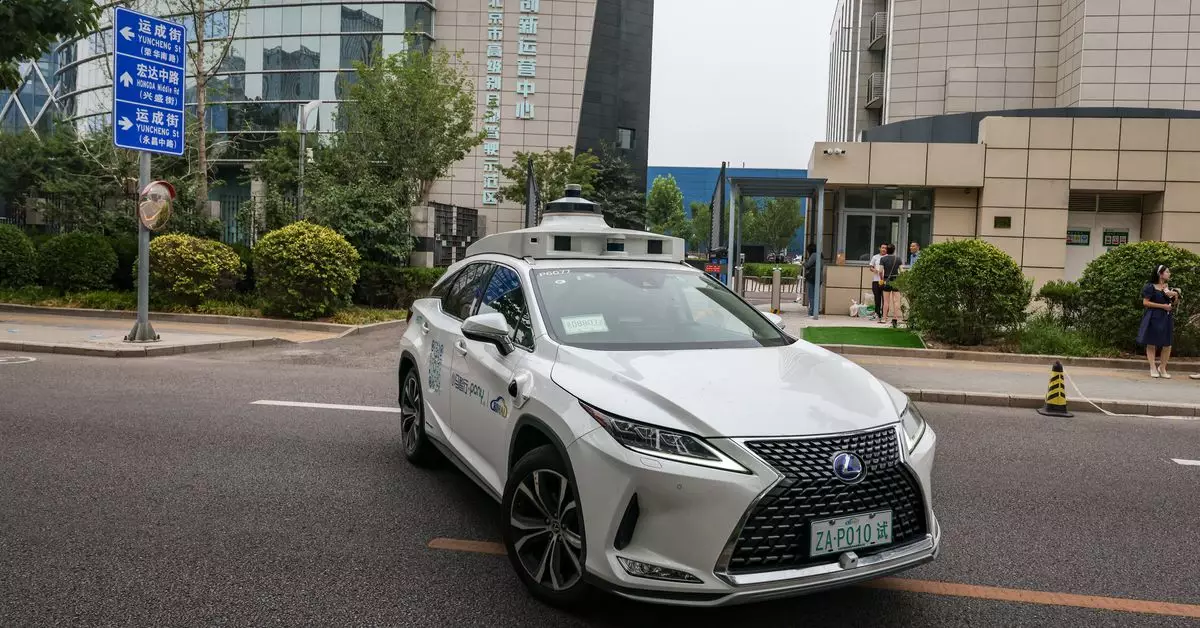The race towards fully autonomous robotaxis has become a notable battleground between the United States and China. While the former grapples with regulatory hurdles and economic considerations, the latter seems poised for expansion, backed by state policies and a burgeoning infrastructure for electric vehicles (EVs). The recently announced plans from Pony.ai, one of China’s foremost autonomous vehicle companies, illustrate this divergence starkly. Set to expand its fleet from a modest 250 to over 1,000 vehicles by 2025, Pony.ai aims to strengthen its presence in major cities like Beijing and Shanghai. This contrasts sharply with the struggles of U.S. automakers, including General Motors and Ford, who have retreated from the critical robotaxi landscape, signaling a retraction from such ambitious endeavors.
Pony.ai’s growth is not merely a matter of ambition; it is supported by partnerships with established automakers like GAC Aion, which allow for increased production capabilities and reduced costs. With electric vehicles becoming more affordable thanks to economies of scale and favorable governmental policies, Chinese companies are in a prime position to foster the growth of autonomous technologies. Their current models are averaging approximately 15 rides per vehicle daily, translating into tens of thousands of trips each week. Such prolific activity showcases how institutional support, coupled with favorable regulations, allows autonomous service providers to flourish.
Baidu’s recent initiatives targeting a sub-$30,000 cost per vehicle, coupled with a strategic partnership with Geely, further underscore the advantages China has over its American counterparts. While U.S. companies grapple with rising costs and regulatory scrutiny, their Chinese counterparts seem to capitalize on national strategies that promote rapid technological development and deployment.
In stark contrast, the American market finds itself at a crossroads. General Motors’ withdrawal from Cruise and Ford’s shuttering of Argo AI highlight a broader retreat from the robotaxi field, where neither company appears willing to navigate the complexities associated with driverless car technology. The redirection of resources to advanced driver-assist features for personal vehicles signals a cautious approach rooted in uncertainty and economic prudence. The U.S. government’s increasing scrutiny over Chinese technologies and the consideration of tariffs have created a challenging environment for growth in autonomous vehicle deployment.
Americans are now questioning whether a strict protectionist approach can co-exist with the need for rapid technological advancement. Recent government proposals to limit the software and hardware imports from China, citing national security risks, exacerbate this issue. As a result, American companies are facing a dual challenge: competitive international development and the encumbrance of regulatory hurdles that slow innovation.
Emerging trends in trade policy, particularly the potential for harsher tariffs against Chinese imports, could stifle the innovation necessary for U.S. companies in the autonomous space. The rising costs associated with these protections may further impede the economic feasibility of developing a cost-effective robotaxi fleet. Companies such as Waymo are already feeling the pinch; their prospective use of a lower-cost Chinese EV as a next-generation vehicle reflects a growing reliance on international partnerships to remain viable in the market.
As American operators face profitability challenges, with none currently managing to break even, attention is turning to the efficiencies found in Chinese ventures. However, despite Pony.ai’s initial public offering being valued at $5.25 billion—a noteworthy achievement—this figure is still 40 percent below its previous market worth, signaling a volatile market ripe with challenges.
Concurrently, the U.S. legislative arena remains stagnant, with no significant progress on autonomous vehicle legislation in over six years. This impasse signifies not just political division but a fundamental struggle to grasp the realities of autonomous technology. Lawmakers are at odds over essential questions around regulation, liability, and the extent to which states can set their own performance standards. Cities like San Francisco have expressed concerns regarding safety, efficiency, and urban planning, all of which create a challenging terrain for companies wishing to deploy more autonomous vehicles.
In light of these complications, it becomes evident that the trajectory of robotaxi development is likely to favor China in the near term. With strategic governmental support, an expanding technology base, and a willingness to embrace innovation, China’s path seems brighter. The U.S., conversely, must navigate a labyrinth of political and regulatory contingencies that threaten to hinder its potential in the autonomous vehicle sector.
The Future Outlook
As the U.S. continues to deliberate over its approach to autonomous vehicles and related technologies, one thing is clear: the competition with China is intensifying. Unless the regulatory landscape becomes more conducive to growth and innovation, the U.S. faces the risk of falling further behind in this pivotal technological race. The future of robotaxis hangs in the balance, influenced by immediate decisions and long-term strategies on both sides of the Pacific. The disparity between the two nations serves as a stark reminder of how economic strategy and regulatory attention can dramatically alter the direction of industry.


Leave a Reply